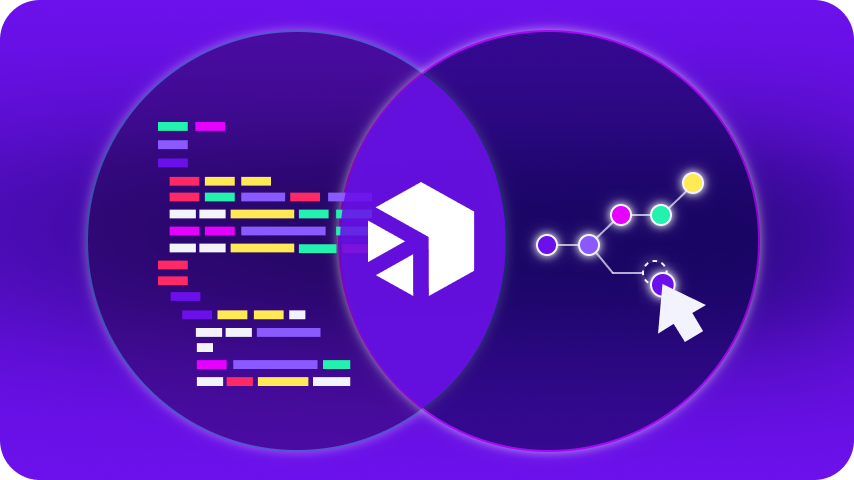December 12, 2022
Everything is connected. The past three years have only served to demonstrate just how accurate that statement is. The changes businesses rushed to implement amid pandemic restrictions did not evaporate as life returned to normal, and the effects of crises here at home and around the world serve as a continual reminder of just how connected we all are.
Digital transformation has emerged as a top priority as businesses work to meet changing consumer demands and ensure they won’t be caught off-guard by whatever comes next. But to achieve digital transformation, organizations must choose between a dizzying number of data integration techniques and strategies to connect their legacy systems with the solutions they rely on for growth and innovation.
This post examines some of the most common data integration techniques and strategies, their pros and cons, and how they perform in different use cases.

Benefits of Data Integration
Does your organization really need data integration? The answer depends, of course, on your business model, but is probably yes.And even if you don’t strictly need integration, your organization could probably benefit from it. Here are just a few benefits of integrating your data:
- Reduced costs – Many forms of data integration automate the transfer of data between systems, meaning you dedicate less resources to moving data manually.
- Improved efficiency – Automated integration also eases your IT staff’s workload and reduces the risk of errors.
- Enhanced data integrity – Data integration solutions generally have a built-in validation step, so you can make decisions based on your data with confidence that it’s accurate.
- Ability to innovate – Integration lets you connect business-critical legacy systems with modern solutions for the power to leverage trends and respond to changing demands.
- Increased security – Streamlining permissions and data access becomes simple and straightforward with integration.
5 Common Types of Data Integration
There are five key data integration strategies:
1. Manual Data Integration
As the name suggests, manual data integration relies on custom code to clean and connect data from different sources. This data integration technique is labor-intensive. Every single integration-related task, from converting to the correct format to displaying in the appropriate system, is done manually by a skilled developer.
PROS
- Requires minimal maintenance once implemented
- Ongoing expenses are lower than other approaches
CONS
- Cannot be implemented without the internal coding expertise to create each connection
- Manual processes increase the risk of error
- Does not scale well unless you have a dedicated team that can keep up with demand for new connections
- Cannot support real-time use
Manual data integration works for one-off projects at companies not struggling with a shortage of IT expertise, but there are better candidates for digital transformation projects.
2. Application Integration
Application integration, sometimes called application-based integration, uses automated software tools to collect data from various sources, convert it to the appropriate format, and send it to its destination. This type of data integration frequently features open-source tools and pre-configured connections.
PROS
- Fully automated tools require fewer internal resources to use and maintain
- Provides seamless data transfer between a wide variety of sources
CONS
- Requires technical expertise to deploy
- Lack of standardization means services using this technique may deliver inconsistent results
- Some risk to data integrity as it moves between systems
If your organization is looking for a way to integrate a limited quantity of data from a limited number of sources, application integration may be the right strategy for you. Enterprise digital transformation efforts may exceed the capabilities of this type of data integration.
3. Uniform Data Access Integration
Data virtualization is the key to this data integration technique. This strategy involves creating virtual versions of integration data that users can search and analyze without removing the core data from its secure location.
PROS
- Supports real-time data use and analysis
- Reduced storage costs since data remains in a single location
CONS
- Only suitable for similar types of integration data
- Too many requests can overwhelm the system and lead to failure
- Accessing data from multiple points simultaneously can compromise integrity
Uniform data access integration is a powerful solution for organizations looking to save on data storage in their integration process, provided demand does not increase.
4. Common Storage Integration
This data integration method, also known as data warehousing, consolidates data from multiple sources into an entirely new system built to transform, store, and serve data to users as needed.
PROS
- Consolidating data in a single location protects its integrity
- Latency is very low
- Data can be accessed and managed regardless of the status of the source system
CONS
- Building a new system to house and process data drives up implementation and maintenance costs
- There can be some latency issues as data is transferred into the system from different sources, meaning real-time data access is not possible
If your company has the financial and human resources to support the high cost of data warehousing and a need to perform complex data analysis tasks, this type of data integration could work for you.
5. Middleware Data Integration
Like manual data integration, middleware is pretty much what it sounds like. Middleware data integration relies on a third-party tool that serves as a technical layer between (or in the middle of) your operating system and applications to format and validate data as it moves between systems.
Middleware integration solutions come in various forms, some requiring technical expertise and others that are intuitive and easy to use, regardless of skill level.
PROS
- Automated or partially automated, allowing developers to focus on applications without worrying about connectivity
- Creates uniformity at interface level for improved oversight and insights
- Some options come with third-party monitoring or maintenance
CONS
- Can require skills or expertise to deploy and maintain (varies by provider)
This data integration technique is ideal for digital transformation initiatives and connecting legacy systems with more modern tools and solutions.
How to Choose an Integration Tool
According to the 2022 State of Enterprise Integration report, only 7% of enterprise IT professionals say their organization has successfully adopted an integration strategy, so if you’re still in the planning stages, you’re not alone. But how do you choose the solution that’s right for you?
Here are four key factors to consider when weighing different types of data integration:
- Basic requirements
Each of the five types of data integration we’ve discussed has different benefits and drawbacks. Make sure the strategy you select fits your organization’s needs. For example, if you need to scale operations up and down, manual coding is probably not the answer to your integration issues.
- Effects on your team
Some data integration techniques require a lot of technical skill or knowledge to implement and maintain. How will that affect your team? Skilled IT experts are already in short supply, so it’s wise to choose a solution that you know you’ll be able to handle.
- Daily operational impact
Understanding how you’ll access integrated data and how implementation and maintenance tasks will affect your business is also critical. Examine how disruptive the data integration technique you choose will be, and be sure your organization is prepared for the time it will take to deploy it and onboard staff.
- Business goals
A solution that meets your data integration needs now might not hold up in the future. Consider your longer-term goals beyond the immediate need to integrate, and choose a strategy that will support those outcomes as well.
Let the Integration Experts at Digibee Help
At Digibee, we eat, sleep, and breathe data integration. Our low-code iPaaS offers all the benefits of a middleware integration solution without any of the drawbacks.
Our intuitive visual interface eliminates the need for niche expertise to create integrations and makes building integrations more efficient. Book a demo today to discover how Digibee can help you.













